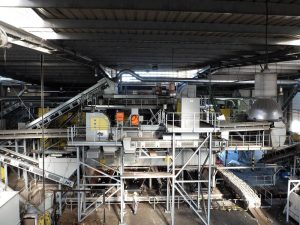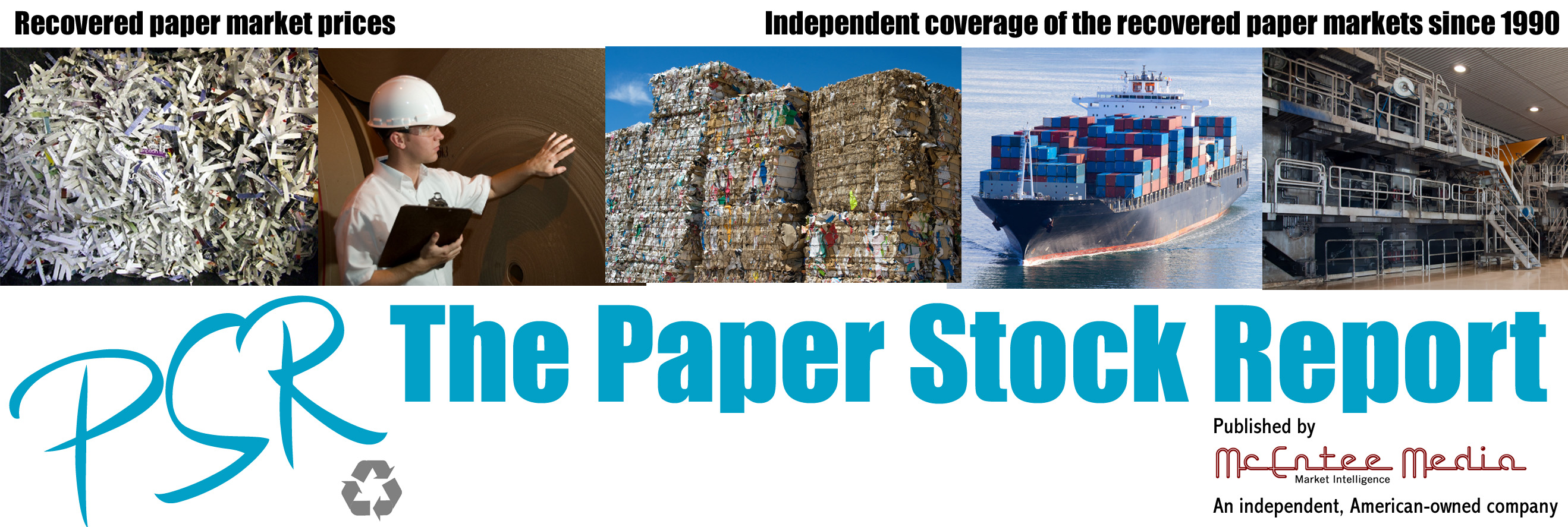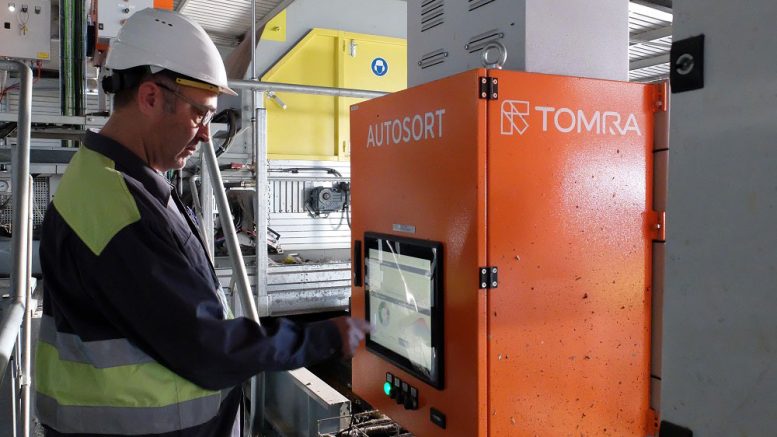By Rick Zettler
National Sword has the industry finding new markets, searching for equipment solutions to meet tightening purity standards
The recycling industry is in the midst of a seismic market shift. The world’s largest importer of recycled material, and arguably the world’s dumping ground for material with impurities, has said enough as it grapples with its own environmental issues.
In July of 2017, China informed the World Trade Organization of its plans to ban all foreign garbage, including recyclables of plastics, paper, slag and textiles. Additionally, the China National Sword standard pushes purity levels to greater than 99.5 percent for the recyclables the country will accept. Companies in China found not to be in compliance with these new regulations stand to lose their import license for up to a year.
This has companies around the world struggling to adapt to this new recycling industry paradigm. According to the Institute of Scrap Recycling Industries, (ISRI) about 31 percent of U.S. scrap exports, valued at more than $5.6 billion were shipped to mainland China in 2017. China also accounted for 51 percent of the world’s plastics scrap imports and historically has been the largest importer of North America’s recyclables.
Some importers in China are exploring ways to adapt to the new purity standards and restrictions.
“Pelletizing is now a hot topic in China, since pellets are still allowed for import,” said Boxiao Qin, sales manager – China for TOMRA Sorting Inc. “Additionally, many of the larger companies are searching for new opportunities outside of China, with some starting recycling facilities in the United States.”
 While this is an option for larger players, Qin sees the new market extremely challenging for smaller companies in China to survive.
While this is an option for larger players, Qin sees the new market extremely challenging for smaller companies in China to survive.
Rather than searching for alternative solutions, Carlos Manchado Atienza, regional director – Americas for TOMRA, is challenging the industry and recycling operations to look for ways in improve the quality of recyclables by removing more impurities.
“We must recycle smarter,” he said. “If we focus on the environmental perspective, it makes no sense to send heavily contaminated recyclables around the world. Today, the technology exists to deliver values for food grades in PET recycling of less than 50 parts per million, practically reaching the quality of virgin material, and we can do the same with many other resources.”
Higher purity levels have not only a more positive environmental impact but also on the equipment at the back end of the process converting the recycled material into a final product.
“If recyclers remove more organic and inorganic impurities from aluminum scrap, this reduces the amount of gaseous effluent to improve smelter air quality, and it can lead to lower maintenance costs from wear on the furnace emissions equipment,” said Eric Thurston, sales manager – metals recycling for TOMRA.
Looking for options
Historically, China and other countries accepted material with purity levels ranging from 90-95 percent or, conversely, impurity levels as high at 10 percent. Recycling companies equipped their facilities with circuits that included sensor-based, optical, laser and other automated machines combined with manual pickers as the last line of defense to remove impurities and meet these standards.
This dramatic purity standard shift to 99 percent or greater by the market’s largest importer has recycling and scrap facilities in many countries looking for other outlets for their second-life products. However, finding a single-country replacement in the market for the country that imported a majority of the world’s plastics scrap is not practical. If a recycling facility chooses not to increase purity levels of its finished product, then the material will have to be split between multiple countries, increasing sales costs.
At the same time, the glut of recycled material on the market is placing severe downward pressure on commodity prices. Some material prices have already dropped sharply as the market adjusts to these new restrictions. Adding insult to misery, companies should expect shipping costs to increase, as ships previously sent directly to China were quickly returned to the originating country, loaded with consumer goods for sale.
Margin challenges aside, operations that decide to seek out alternative markets rather than upgrading the facility do have options.
Potential lies nearby China in developing Southeast Asia countries such as Vietnam, Thailand and Indonesia. Also, India and South America are alternatives to receive the thousands-of-tons-per-year crater in the recyclable market left behind by new China restrictions.
Alternatively, large markets such as North America can look to more long-term solutions by further developing and enhancing the internal market for paper, plastics, ferrous and non-ferrous recycled material. While requiring substantial investment to develop new and more powerful market models to properly manage the market’s waste resources, it would deliver a competitive boost to the market and advance sustainability efforts.
Investment Analysis
For companies weighing the balance between increasing product purity and finding new markets, serious consideration must be given to the investment in new equipment, installation downtime and ongoing operating costs.
“At the end of the day in the non-ferrous markets, the decision comes down to cost-per-pound to process the material compared to the price they can get for the product,” Thurston said.
While Manchado Atienza agrees with Thurston, he offered another consideration the industry must factor into the equation as it moves forward in today’s market environment.
“Companies can seek out alternative markets for their products, but we should always work to improve quality to avoid encountering a ban similar to China’s from another market,” he said.
An alternative to investing in equipment is to slow down the belt and add manual pickers to the final sorting stage for removing impurities. With a low initial investment and little to no plant downtime for circuit upgrades, it may appear to be an appealing alternative to equipment. However, this solution results in significant increases in long-term operating costs.
Mid-size facilities that processing about 10 tons per hour (TPH) of recycled material will, on average, employ two pickers, whereas large operations will use five to eight pickers for processing 45 to 90 TPH of material.
“Depending on the location, U.S. recycling facilities typically figure a picker’s salary from $35,000 to $50,000 per year when determining costs,” said Thurston.
Adding two or three pickers to the line can increase annual processing costs by $100,000 or more.
“It can get to the point where processing speed slows and picking costs increases too much for an operation to remain profitable,” said Thurston. “Plus, workers occasionally require time off for vacation or illness, which can affect product output.”
If adding overhead to pull impurities from the final product doesn’t make financial sense for the operation, then upgrading the circuit either through constructing a new facility or adding new technologies to the recycling configuration is another option. Building a new facility, however, can take months and cost millions of dollars.
The more economical route is to work with experts focused on sorting technologies and offering global experience to investigate what equipment upgrades are necessary to meet more stringent standards. This option can often be done at a fraction of the time and cost of building new.
Depending on the type, age and condition of the equipment, recycling operations can expect to invest $180,000 to $360,000 in equipment to increase purity levels required to meet more stringent regulations like National Sword.
“Companies need to be aware of the cost for both the value-added and non-value-added equipment for new technology integration,” said Thurston. “Look for value-added equipment that can be easily integrated into the existing circuit. Otherwise, the cost for conveyors and other non-value-added additions can add up quickly.”
There are potential side benefits to adding new technology to the circuit. This approach can reduce the number of pickers required to remove impurities, giving operations options for more efficient workforce utilization to reduce overhead and long-term operating costs, resulting in a short ROI for the new equipment.
However, not all technology upgrades are equal, and recycling operations must investigate closely which works the best to meet established purity goals. Some upgrades require complete circuit add-ons, which demand more time and cost, additional non-value added equipment, and more space. Other technologies can be added onto existing equipment in the circuit, saving space and installation costs. “TOMRA’s LOD (laser object detection), for example, can be mounted onto the same platform as our AUTOSORT to detect material like black plastics, rubber and glass,” said Manchado Atienza.
In addition to the cost of new technology, equipment lead-time and plant downtime should also be factored into the investment equation. With recycling operations focused on circuit upgrades to meet tightening standards, equipment lead-times have lengthened.
“The time from when the equipment is ordered to when it arrives can range from 12 to 20 weeks, and the plant builder will require an additional one to two weeks for installation,” Thurston said.
Amy Guan, sales engineer for TOMRA, recommends that a facility work closely with technology experts to make sure all the upgrade goals are met.
“The goal is to upgrade the equipment in order to meet these stringent standards, and technology experts and plant designers will have the expertise to make this a reality,” she said. “The last thing a facility wants to do is make equipment upgrades that don’t meet goals and have the cost associated with a shipment rejected for not meeting purity standards.”
Recycling smarter
Sorting equipment manufacturers are introducing a host of new products to help recycling operations stay ahead of the purity curve. Suppliers have recently introduced air systems and laser detectors to supplement NIR technology that does not sort all impurities from waste paper and cardboard. As a result, equipment manufacturers and plant designers are upgrading their test facilities, so customers can ensure new technology added to the circuit will remove impurities and attain the desired purity from their feed material.
The main impurities left behind by existing sorting circuits that manual pickers must remove are black items, such as plastics and rubber, as well as glass. Recycling facilities must closely examine the main impurities and determine the right technology that will work best without significantly increasing processing costs.
“Technology is the crucial investment to achieve all new regulations as well as future requirements, so recycling operations must choose a partner focused on continuing product developments to respond to evolving market needs,” said Manchado Atienza.
Zurik and Zorba are non-ferrous products that scrap operations must target for upgrades to meet China’s demanding 99 percent purity levels. Printed circuit boards (PCBs), wire and other non-metal objects are the primary contaminants left behind by today’s recycling circuits, and there are several options at the facility’s disposal for addressing.
Some alternatives, according to Qin, start by using existing technology already applied in the field.
“Operations could add a multistep Eddy current solution, which is low-cost but not as effective as new laser technology,” he said. “Also, density separation and wet treatment are options but may not be convenient for all operations.”
Laser technology is showing promise by increasing current circuit purity levels by as much as 4 percent, allowing scrap recyclers ot reach China purity requirements without significantly increasing energy draw and costs.
“Our LOD system attaches to the same platform as our FINDER and serves as a negative sort to remove PCBs as well as black plastic and rubber attached to the metal,” said Thurston.
Whether adding new technology, more stages with existing technology or increasing the number of pickers to upgrade purity, Thurston reminds recycling and scrap facility operators to consider upgrading the entire circuit.
“Now is the time to look at all components to see if upgrades are needed to make the process more efficient,” he said. “Consult with your equipment supplier to analyze all circuit components including shredders, magnets, screens, conveyors, optical sorters, electromagnetic sensors, etc. to make sure all are working well together efficiently.”
Because in the end, upgrading the final product facilities offer their customers is not only about advancing the recycling industry, it’s also about making money. “Customers will pay a higher price for a high quality product. It’s as simple as that,” said Manchado Atienza.
Zettler is president of Z-Comm. He wrote this article in collaboration with TOMRA.
Follow us on social media:

Be the first to comment on "National Sword: Raising the quality standards"